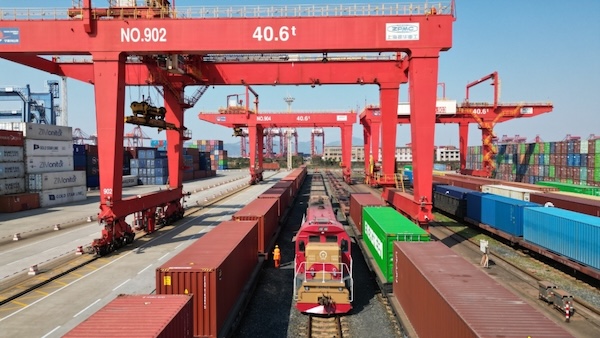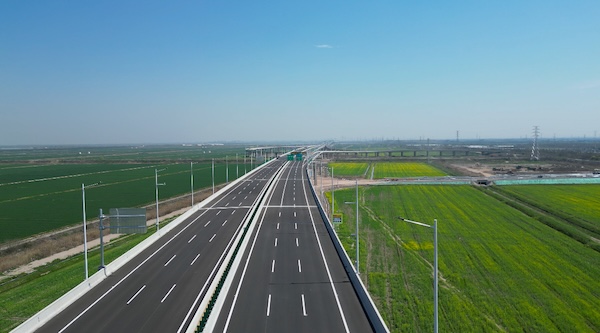Prehistoric rice paddy site discovered in Yuyao

An aerial view of the Shangqian site in Yuyao, Ningbo. [Photo provided to Ningbo Daily]
A rice paddy site dating back to 5,300 to 5,500 years was recently discovered in Ningbo, Zhejiang province.
According to the Ningbo Cultural Heritage Management and Research Institute, the site, named "Shangqian" and with an area of 1,000 square meters, is located in Sanqishi town, Yuyao city, where the Hemudu site was excavated. It was excavated from August to October.
During the excavation, three ridges, a trench a road, a terrace, nine pits, and some remains of rice and weeds were discovered. The trench near one of the ridges is supposed to be used as water drainage, while the road going east-west will connect the settlement and the rice paddy.
"The area was later transformed into marshland, which fostered many aquatic plants and was no longer suitable for rice cultivation. It explains the formation of the site's peat layer," said Mei Shuwen, a researcher at the institute. "Above the peat layer is a layer of silt. It might result from a sudden event, like a typhoon and flood."
Compared with the Shi’ao site, a group of rice paddies spanning over 1,500 years uncovered in Yuyao, the Shangqian site had a shorter duration of around 200 years. But the discovery of the Shangqian site also greatly contributes to studies of prehistoric rice paddies and the development of rice farming.
Mei said that the irrigation system discovered at the site offers crucial material for the study of rice agriculture.

 Ningbo seabird project seeks international volunteers
Ningbo seabird project seeks international volunteers  Jakub's journey: From shipyard to sea
Jakub's journey: From shipyard to sea  Badminton Asia COO applauds Ningbo
Badminton Asia COO applauds Ningbo 


